Environmental Working Group (www.ewg.org/) provides information on cleaning product ingredients from the published scientific literature and from data available from companies and the government.
Below are some products from the HALL OF SHAME. Mainly, I want you to visit the website and find out information on products you use. Soon to come to the website is a database of cleaners, which you will be able to search and find better alternatives to your cleansers.
The best advice is buried in the list, so I have moved it up here:
Check your brands' labels and websites for ingredient lists. Avoid products containing nonylphenol ethoxylates (look for "nonylphen" or "nonoxynol" within the ingredient name) and 2-butoxyethanol, butoxydiglycol, ethylene- or diethylene glycol monobutyl ether, diethylene glycol monomethyl ether or methoxydiglycol.
Below are the worst of the bad cleansers and treatments.
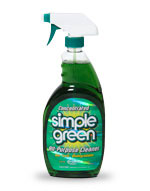
Simple Green Concentrated All-Purpose Cleaner
It's labeled "non-toxic" and "biodegradable." It contains:- 2-butoxyethanol, a solvent absorbed through the skin that damages red blood cells and irritates eyes;
- A secret blend of alcohol ethoxylate surfactants. Some members of this chemical family are banned in the European Union.
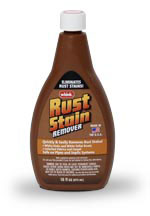
Whink Rust Stain Remover
Advertised for cleaning white porcelain sinks, toilet bowls and colorfast fabrics and carpet, the fine print warns:- "May be fatal or cause permanent damage."
- "Causes severe burns which may not be immediately painful or visible."
- On technical information for workers, "will penetrate skin and attack underlying tissues and bone."
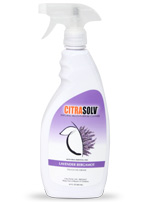
Citra-Solv Cleaner & Degreaser
These concentrated liquids and ready-to-use sprays contain d-limonene and orange oils from citrus peels. According to the company's worker safety disclosure, Citra-Solv concentrate is 85 to 95 percent d-limonene. That the oils are derived from citrus implies safety, but sprayed into the air, they can react with trace levels of ozone air pollution to form ultra-fine particles that penetrate deep into the lungs and formaldehyde, which the U.S. government classifies as a known human carcinogen. The California Air Resources Board advises people to limit the use of citrus- or pine oil-based cleaners on smoggy days to avoid exposure to particulates and formaldehyde.Banned abroad-should be banned in USA
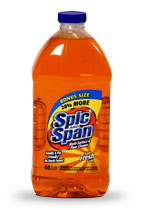
Spic and Span Multi-Surface and Floor Cleaner
This product contains nonylphenol ethoxylate, which the state of California has banned in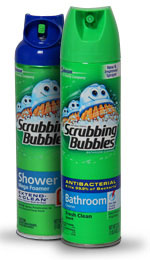
Scrubbing Bubbles - Antibacterial Bathroom Cleaner & Extend-A-Clean Mega Shower Foamer
These products contain up to 10 percent DEGBE, also called butoxydiglycol, a solvent banned in the European Union at concentrations above 3 percent in aerosol cleaners. It can irritate and inflame the lungs.
Mop & Glo Multi-Surface Floor Cleaner
It contains DEGME, also called methoxydiglycol, at up to 15 times the concentration allowed in cleaners sold in the European Union. The United Nations Economic Commission for Europe says DEGME is "suspected of damaging the unborn child." (This product is also sold as "Mop & Glo Triple Action Floor Shine.")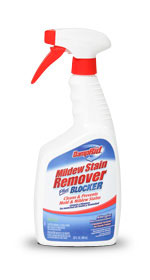
DampRid Mildew Stain Remover Plus Blocker
It may contain up to 10 percent of a hazardous solvent called 2-butoxyethanol. Canada caps this chemical's use in non-aerosol cleaners at 6 percent. It also contains nonylphenol ethoxylate, prohibited in cleaners sold in the E.U.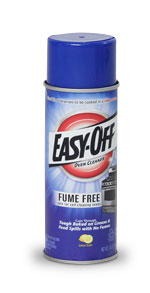
EASY-OFF Fume Free Oven Cleaner
This spray contains 5 to 10 percent DEGBE. The E.U. bars concentrations of DEGBE greater than 3 percent because it can harm the lungs.Drain cleaners that can burn and blind
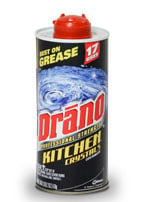
Drano Professional Strength Kitchen Crystals Clog Remover
The label says this product can severely burn eyes and skin and cause blindness or even death. Drano Kitchen Crystals may remain in the drain after use, creating an extreme hazard. Using a plunger could cause caustic splashback. Pouring any other product down the drain might trigger a dangerous chemical reaction. The label warns purchasers to "keep water out of can at all times to prevent contents from violently erupting or boiling out." Yet unsuspecting consumers have been known to store it under the sink.Oven cleaners that emit toxic fumes
Conventional oven cleaners can contain substantial amounts of sodium or
potassium hydroxide, meant to dissolve crusty, baked-on gunk. These
chemicals can also burn skin, lungs and eyes.
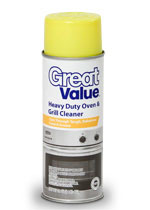
Walmart Great Value Heavy Duty Oven & Grill Cleaner
The label warns: "Will burn skin and eyes. Avoid contact with skin, eyes, mucous membranes and clothing. Harmful if swallowed. Avoid inhaling spray mist. Wear long rubber gloves while using…"
CVS/pharmacy Fume-Free Oven Cleaner
Though claiming to be "fume-free," the label warns: "Vapor harmful… open windows and doors or use other means to ensure fresh air entry during application and drying." The label says the product contains an unidentified substance "known to the state of California to cause cancer."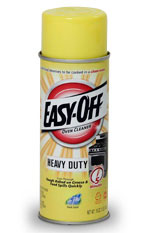
EASY-OFF Heavy Duty Oven Cleaner Aerosol Spray
The label warns: "Warning: …DANGER: CORROSIVE…WILL BURN EYES AND SKIN. HARMFUL IF SWALLOWED. Avoid contact with eyes, skin, mucous membranes and clothing. DO NOT ingest. Use only with adequate ventilation. Avoid breathing spray mist. Wear long rubber gloves when using…"Mystery mixtures
Ingredient labels are mandatory for food, cosmetics and drugs - but not
for cleaners. Bowing to pressure from customers and to the threat of
federal regulation, most companies list some ingredients on labels and
websites or in worker safety information. But a few companies disclose
nothing. Others may list one or a few ingredients or use vague terms
like "surfactant" or "solvent."
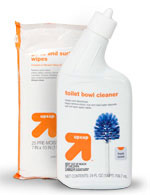
Target's Up & Up
This brand's Toilet Bowl Cleaner and Glass and Surface Wipes do not list any ingredients on the product packaging. Other products sold under the Up & Up label list only one or two ingredients or use vague terms.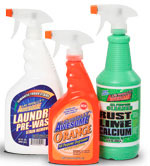
LA's Totally Awesome
This brand divulges few ingredients. It lists just one ingredient for its Orange All Purpose Degreaser & Spot Remover, the hazardous solvent 2-butoxyethanol.
Walmart's Great Value
This store brand does not list ingredients in its Heavy Duty Oven & Grill Cleaner and lemon-scented Furniture Polish, despite the company's commitment "to sell products that sustain people and the environment." Other items sold under the Great Value brand list few ingredients or use general terms for them.Fatal if inhaled
Some popular cleaning products contain addictive inhalants. Inhalants
generally have been abused by 1 in 5 American teens and are considered
"gateway drugs" that lead to drug and alcohol abuse (www.inhalent.org). They are potentially fatal in concentrated form. A few of the many inhalant products EWG found:

Glade Air Freshener Sprays, Air Wick automatic air fresheners, and Old English furniture polish
These products warn that "intentional misuse by deliberately concentrating and inhaling the contents can be harmful or fatal."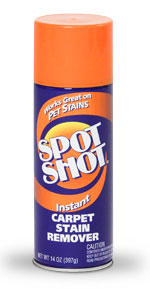
Spot Shot Carpet Stain Remover
This product warns that "inhalation abuse of aerosol products may be harmful or fatal."Fatal if swallowed
When is a clean house worth this risk?
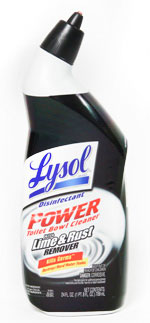
Lysol Disinfectant Power Toilet Bowl Cleaner with Lime & Rust Remover
This corrosive acid concoction kills bacteria but is also labeled "harmful or fatal if swallowed." The cleaner's child-proof cap is an important safety feature. The label warns not to squeeze the container when opening and to wear safety goggles. A bit of this acid in the eye can cause "irreversible damage."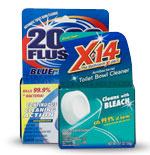
2000 Flushes and X-14 toilet bowl cleaners
These chlorine-laden discs don't harm plumbing or septic systems, but according to the label they "may be fatal if swallowed." The boxes warn customers to wear rubber gloves when handling, hold the disc away from the face and avoid inhaling the fumes. A pet could confuse a disc with a plastic chew toy.High-hazard ingredients

Hagerty Liquid Jewel Clean
It contains perchloroethylene, a toxic solvent classified as "probably carcinogenic to humans" by the International Agency for Research on Cancer.
Tarn-X Tarnish Remover
This "Wipe & Rinse" product contains up to 7 percent thiourea, a chemical classified as a carcinogen by the state of California. The company's technical information for workers says "prolonged or repeated exposure may cause reproductive and fetal effects."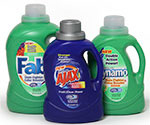
Ajax, Dynamo and Fab Ultra liquid laundry detergents (Phoenix Brands)
These contain formaldehyde, also known as formalin, classified as a known human carcinogen by the U.S. government and World Health Organization. Formaldehyde can cause asthma and allergies. The company divulges the presence of formaldehyde in the product only on technical disclosures for workers.Combatting static with toxic chemicals
Dryer sheets and anti-static sprays may free clinging fabrics and stop
static sparks, but they usually do it with quaternary ammonium compounds
that can irritate lungs and cause asthma as well as allergic contact
dermatitis.
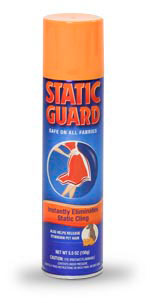
Static Guard
This product contains the chemical DTDMAC, or ditallow dimethyl ammonium chloride, which is so persistent in the environment that it can't be used as a cleaning ingredient in the European Union.
Final Touch Ultra Liquid Fabric Softener
This brand contains quaternium-18 (dihydrogenated tallow dimethyl ammonium chloride or DHTDMAC), which also cannot be used in cleaning products sold in the European Union because of its persistence in the environment.Spray cleaners with asthma-causing ingredients
Even though 1 in 10 U.S. children suffers from asthma, some companies
make spray cleaners that fill the air with asthmagens, meaning
ingredients that cause asthma.
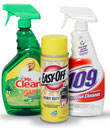
Clorox, Fantastik, Febreze, Formula 409, Easy-Off, Lysol, Mr. Clean and Spic and Span.
Many of the spray cleaners sold under these brand names are laced with quaternary ammonium compounds or ethanolamine, ingredients classified as asthmagens by the Association of Occupational and Environmental Clinics, a professional association of clinics and health experts. These chemicals can trigger asthma attacks and can cause new cases of the disease in people who are asthma-free. Ingredients classified as asthmagens don't belong in spray products.100+ hidden chemicals
EWG's 2009 state-of-the-art air pollution tests of 21 common school
cleaning products turned up a wide range of air contaminants linked to
asthma, cancer, reproductive toxicity, hormone disruption and
neurotoxicity. Some of the worst offenders are in products also commonly
used in the home.
Undisclosed chemicals in the air
Air fresheners do not clean or purify the air. They merely cover up
odors by releasing undisclosed mixtures of fragrance chemicals. Common
fragrance components include chemicals that spur allergies, trigger
asthma attacks or impair reproduction.

Lysol Neutra Air Freshmatic
This product boasts that "your home will always smell fresh and clean" but cautions that the device should be placed "in well-ventilated rooms away from sleeping areas." Among the label's warnings:may be harmful if directly inhaled, may cause allergic reaction in some individuals, DO NOT spray towards face or body, DO NOT get in eyes, avoid content with skin, DO NOT spray directly onto surfaces.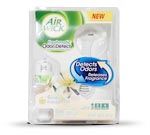
Air Wick Freshmatic Compact
This product cautions to "use in well-ventilated rooms away from sleeping areas."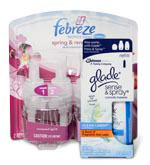
Febreze and Glade automatic air fresheners
These products warn, "Do not use in small confined pet areas without adequate ventilation."Dead Zone Cleansers
Most detergents claim they are "phosphate free." And that's a good
thing, because phosphate compounds, formerly a mainstay for cleaning
dishes and clothing, wash into waterways and spur rampant algae growth
that leads to massive "Dead Zones" in the Gulf of Mexico, Chesapeake Bay
and other water bodies. Twenty-five states and the District of Columbia
prohibit phosphates in household dishwashing and laundry detergents.
But some companies exploit a legal loophole by selling phosphate-laden
additives that are as harmful as banned detergents.

FINISH Glass Magic Hardwater Performance Booster
This product contains up to 21 percent phosphate by weight, according to the label.
Source: http://www.ewg.org/release/ewg-s-online-guide-healthy-cleaning

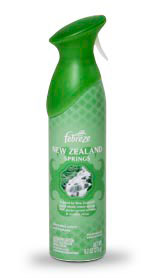
4 comments:
really a wonderful post thank you very much dude keep it up http://www.khiti.com
That plugin looks great, i think ill give this a try. Thanks for the info.
Rinoplasti
Have a wonderful site also find it very useful, Thanks for the post
(Για Παραγγελια Η Συνεργασια χρειαζεται Εγγραφη!) ΓΙΝΕ ΣΥΝΕΡΓΑΤΗΣ!ΕΓΡΑΦΗ ΔΩΡΕΑΝ!
Really this is a amazing post so thanks for share.
Birthday Gifts
Post a Comment